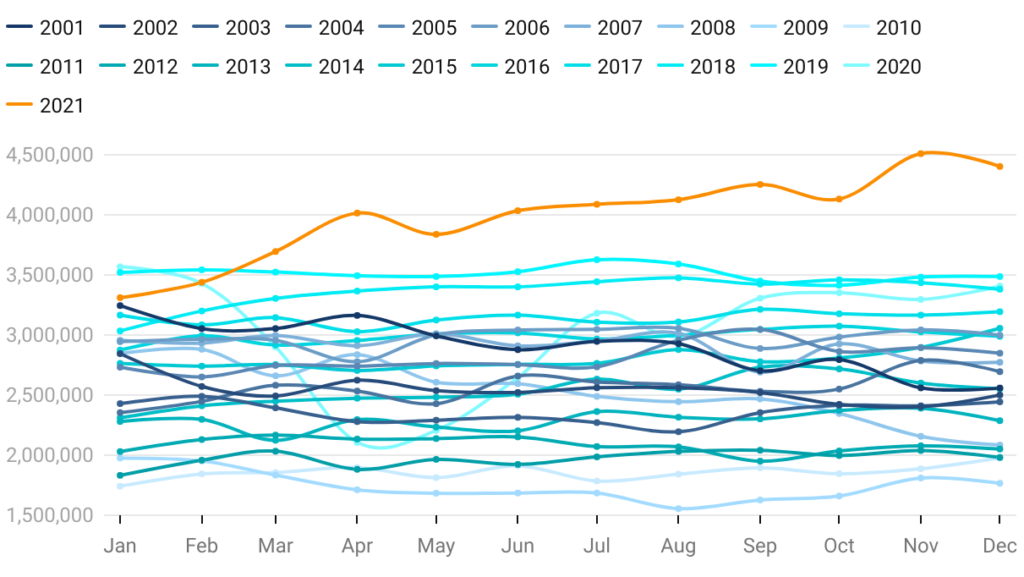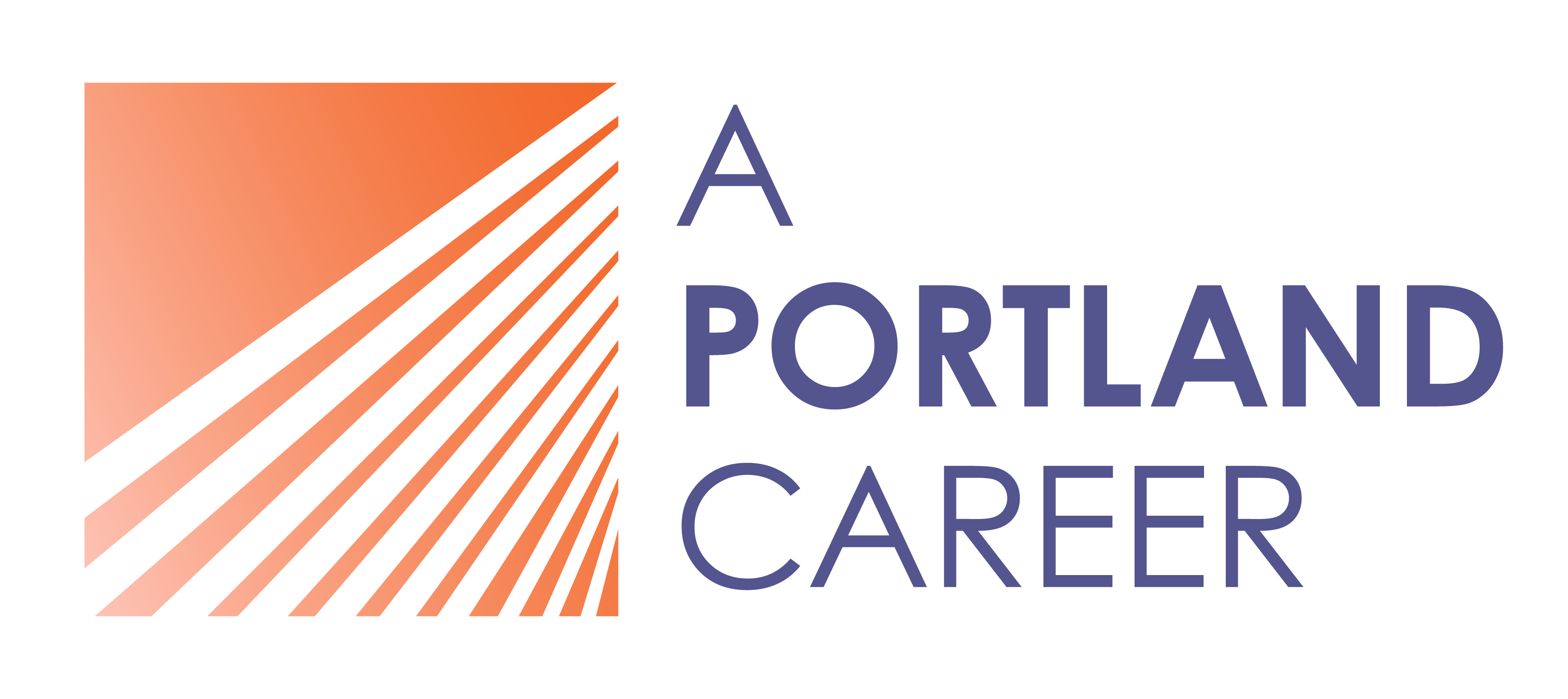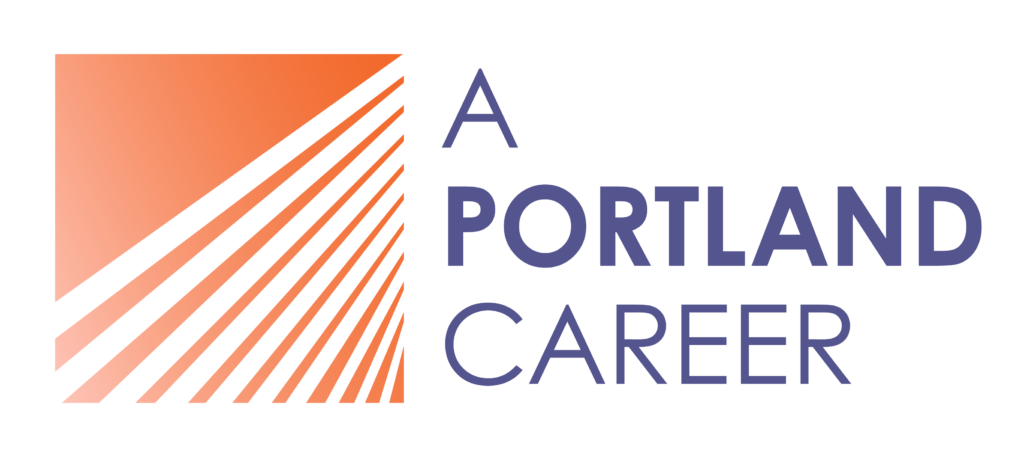Resistance is futile! Get comfortable with workplace tech and make it part of your career development plan!
Career trends in 2023 are shaping up: read about the impacts of recession fears, tech layoffs, and COVID recovery on the job market today.
Career Trends 2023: What Will Impact the Job Market in the Coming Year
By A Portland Career, and edited by Dan Hahn, M.S., and Suzie Sherman
Itching for a career change? We can help you make it happen

“It shouldn’t take a pandemic to convince people to put their mental health above their careers. In the long run, the choice between success and well-being is a false dichotomy. The best way to achieve your goals is to lead a life that invigorates you—not one that drains you.”
—Adam Grant, author, organizational psychologist, TED speaker
The impact of the COVID-19 pandemic on the way we work cannot be overestimated. COVID has caused everyone to rethink what is important when it comes to how work gets done. Not just in and around Portland, but across the globe workers are now more stressed out and dissatisfied than ever. Therefore, “The Great Resignation” hasn’t been all that surprising for us to see.
Accompanying innovations in technology, demographic and cultural value shifts, and the ongoing pressures of climate change will continue to shape the world of work into 2023.
If you’ve been paying attention to more recent trends, inflation and the perception of a looming recession is on your radar, as are the thousands of layoffs we’ve seen in the tech industry this November. A near half trillion dollar crypto exchange collapse has sparked concerns about financial contagion to other industries.
Whether you’re seeking a new position now or not, you have probably already considered your own values, goals, and skills. You might have also started to consider your temperament for a specific industry, or your ideal kind of job situation, whether it’s remote work/“WFH” (Work From Home), a job in the gig economy, or a more traditional kind of workplace.
In this article, we discuss the trends exerting the most impact on the job market in the coming year, 2023.
If the probability of a 2023 recession has you concerned, we can help you future-proof your career. Explore emerging sectors, gain insight into your skills, and discover new roles to apply for. Schedule a consult with one of our career coaches now.
Home → Helpful Articles → Career Growth → Career Trends 2023: What Will Impact the Job Market in the Coming Year
Here are more great posts to help you along your career path, whether you’re looking to meet new challenges, or thrive where you are:
- The Tech and Social Media Skills You Need as a Job Seeker or Career Explorer
- The Job Seeker’s Checklist: Your Career Development Toolkit
- How to Prepare for a Fulfilling Career: Identifying and Overcoming Career Barriers
- How to Get the Education You Need to Further Your Career
- What’s the Difference between A Job, A Career, and A Calling?
- How Strategic Volunteering Can Help You Find a Job You Love
If you feel stuck, get in touch with us, and we’ll tailor a career growth plan to help you become the professional you want to be.
On This Page

Major career trends to plan for in 2023
We’ve already been affected by a dramatically changing work environment over the past few years. There have been new technological wrinkles at work that have required us to get up to speed ASAP.
Maybe you had been contemplating leaving your workplace to find better work-life balance, empowered by what you’ve heard about “The Great Resignation.” In light of recent recession fears and layoffs in the tech industry and projected cuts in a variety of other industries, you might be considering making a move.
Here’s our view of what to plan for most relating to the world of work and your career in 2023.
Recession probability and tech layoffs
As early as last summer, indicators of a slowing economy started to emerge when the Federal Reserve increased the federal funds rate in attempt to control inflation. This was the fallout from years of stacking ripe inflation tinder in the forms of quantitative easing, stimulus payments and supply chain disruptions. The impacts of the drawn-out Russian assault on Ukraine provided the spark for the flame. Since 2020, the Fed has tried to delicately balance the need to keep the economy humming in spite of material slowdowns in supply chain with lower interest rates, and hitting the brakes to address rising consumer prices.
Companies, once able to expand in favorable hiring conditions added roles for many new remote workers during the first years of the pandemic, are now contracting and starting to lay off thousands. People are legitimately worried about broadened cuts in the coming months through early 2023. Mark Zuckerberg of Meta and Jack Dorsey, the recently deposed CEO of Twitter, both acknowledge they “overhired” workers during the pandemic, and they are now paying for these “overcorrections.” 24,000 tech workers in the U.S. have lost their jobs this month alone.
COVID-23?!
Back in 2020, it would have been hard to believe that, almost three years later, effects from the COVID-19 pandemic would continue to pummel the economy, creating not only a global healthcare crisis, a massive increase in unemployment rates, an exodus from the labor market, and international supply chain shortages. China, yet again, is locking down almost 3 years after the virus was first discovered in Wuhan.
The negative impacts on workers and families, just in terms of physical safety and health, as well as mental health and wellness are clear. But the impact on the structure of our workplaces is also profound. The COVID era has invigorated the drive toward better wages and a more flexible work environment.
The Bureau of Labor Statistics (BLS) conducted a Business Response Survey in 2021 and found that 20.5% of private sector employers increased worker’s base pay in response to the pandemic, and that 34.5% of employers increased remote work or hybrid work opportunities. More than 60% of those employers report that they would continue to offer telework permanently.
Recent initiatives for better pay and flexible work schedules appear to be deployed across fields, from frontline infrastructure and the service sector, to white-collar workplaces. Workers in all sectors want more time to care for themselves and their family members at all times, but especially amid an international health crisis.

“The Great Resignation”

If you’ve paid attention to news and internet discourse at all in the last year, you’ve no doubt heard the term “The Great Resignation.” The BLS reported a record high quit rate of 47.8 million in 2021, illustrated well in the graph above from the nonprofit Society of Human Resource Management
Workers left their jobs in droves in 2021, but the BLS reports that the workforce quit rate has been on the increase for the last ten years.
As innovations in technology, increased global competition, and the realities of an ever-increasing cost of living become clearer, some employers seem to be getting the message that workers require more pay and flexibility, crave opportunities for professional development, and are demanding a more responsive, and more respectful work environment to meet these needs. Pew Research provides a great summary of this evolving progression.
The pandemic has driven these trends home (literally!). Employers’ concern over retention of their workforce is substantiated, and workplaces are starting to pivot.
Entrepreneurship and self-employed, independent contracting continues to be more prevalent as a means of escaping the inflexibility of traditional work. One-third of U.S. workers are now freelancers or contractors.
Not sure which career is right for you?

Technology and automation
In 2022, and for several years running, technological innovation, automation, and customer demand for time-saving services are driving a major paradigm shift across all industries. Workplaces are shifting to encompass the myriad remote work options from digital marketing to programming, and even to remote administrative assistant and accounting jobs. Essentially, any work that can be done on a computer from home is now part of the digital work sector.
Remote work and the gig economy
We live in an era of on-demand–everything! Amazon, Blue Apron, Lyft, DoorDash, AirBnB, Venmo, media streaming platforms, Zoom and other remote conferencing apps, have radically changed the landscape of work, and how we buy goods and services. More industry-revolutionizing tech emerges daily, promising to make our busy lives less frustrating, and shifting the workforce to remote work and new jobs in the gig economy. These rapid changes make it hard to predict the future, requiring of most professionals a certain degree of agility and upskilling to take advantage of new opportunities.
Automation and the restructuring of work
Automation and innovations in artificial intelligence (AI) will continue to have a major impact on the employment landscape. While predictions in the 2010s that automation would put nearly 50% of the workforce on the unemployment line did not bear out, it is increasingly true that the structure of work, and the need to adapt to working with automation and new technology will continue to be essential.
A 2022 MicKinsey Global Institute study posits that, while more than 49 million jobs might be displaced by innovations in automation, more than 35 million of those workers will stay in the same occupational categories, and new jobs will be created alongside others that are lost. The aggregate effect might mean a 9 percent net job loss. Still, this amounts to millions of potential jobs lost and many millions more workers who will have to upskill and train for new roles, requiring substantial public and private sector investment.

Demographic shifts, DEI, and the demand for justice
Demographics in the United States are shifting in multiple ways that impact the world of work. Baby Boomers are retiring out of the workforce, or shifting toward later in life entrepreneurship. Decades of corporate globalization and immigration trends, along with societal demands for diversity, equity, and inclusion, are reshaping U.S. life and the economy.
- Aging population: The critical mass of Baby Boomers are approaching, or have reached, retirement age. According to Pew Research, about 1 million Boomers retire each year, making the way for Gen X and Millennials to fill their spots. Older members of Gen Z, born as early as 1997, have already entered the workforce, as well, but many younger workers lack the requisite skills, experience, and education needed to fill the same roles.
- Cultural shifts, immigration, and globalization: Global economic interconnectedness has continued apace over decades, as corporations move operations and pull from labor markets in other parts of the world. At the same time, the U.S. population grows more diverse, and, despite regressive political policies, the U.S. continues to need immigrants from other countries to fill the educational and skill gaps created by the Baby Boomers’ exodus from the workplace.
- Diversity, equity, and inclusion (DEI): The rise of anti-democratic forces globally, and the increase in, and increased awareness of, racial violence and economic oppression, have given rise to demands for justice. These have rippled throughout all parts of life, including the workplace. Hiring and employee retention practices are undergoing a revolution, as workplace DEI initiatives become more commonplace and more strategic. The LA Times reports that more than 80% of workplaces in the U.S. put DEI initiatives in place in 2021 alone. These efforts will continue to shape workplaces and broaden the umbrella of leadership and innovation to more diverse voices.

Climate Change
In the presence of severe droughts, rampant wildfires, and increasingly intense tropical storm seasons, it is evident that climate change is already impacting world populations and the way we structure our lives, our communities, and the shape of global industry.
The UN reports that “About 4 billion people,” or two-thirds of all humans, “experience severe water scarcity during at least one month of the year.” This water stress will continue to increase, driving global conflict, immigration patterns, and the necessity for international cooperation on infrastructure and adaptive solutions.
Many companies and organizations globally are aware of the already visible economic threats of climate change. These threats offer opportunities for those committed to sustainable industries and renewable energy sources like solar and wind power. This demand, in turn, will create opportunities across fields such as manufacturing, construction, engineering, energy, retail, technology, and waste management, among many others.

Industry impact and the latest career trends
Below, we review several industries that are experiencing the most growth, and provide further online resources to help you keep your ear to the ground on evolving career trends.
Industries and jobs to watch out for
To keep your skills relevant in this shifting landscape, be aware of these particular growth sectors:
- Technology and data analysis: software developers, data and marketing analysts, statisticians, and computer systems analysts, cybersecurity analysts
- Healthcare: physician assistants, nurse practitioners, medical secretaries, physical therapy, pharmacists
Did you know? Overall, the healthcare field enjoys median salaries of $57,000 (35% higher than that of general occupations). Healthcare jobs are projected to rise 19% through 2023, resulting in more than 2 million openings.
- Digital information and marketing: social media experts, web and user experience designers, digital marketing specialists
- Lifelong learning: teachers, trainers
An honorable mention to these recession-proof occupations: accountants, auditors, medical doctors, registered nurses. While not experiencing rapid sector growth, these professions are evergreen in demand.
Resources to inform your career research
To keep on top of career trends, and inform yourself about salary expectations and industry growth, the website you must get to know is the Bureau of Labor Statistics. Their Occupational Outlook Handbook provides boundless data on what industries are growing, what level of education or training you need to enter a field, and how much you can expect to earn.
Pew Research conducts rigorous investigations into, among many other topics, the future of work and economic trends. Check out their collection.
And, bring your career exploration down to the more personal level, at our very own archive of Self-Help Articles at A Portland Career. Our site is a trove of practical know-how from expert career coaches to inform your job search and spark inspiration. We’re adding new articles to the site all the time, so bookmark us!
Final thoughts on career trends in 2023
As technological innovation and the COVID-19 pandemic impact the job market in 2022, we are seeing the future of work unfold before our eyes. The very structure of how we work is shifting, as workers demand more security and better treatment in their workplaces, using themselves as leverage in “the Great Resignation.” Many industries, like software development, health care, and app-based services are seeing exponential job growth. The impact of remote work technologies, workforce automation, and climate change are affecting jobs, and expanding what we imagine to be possible, across all sectors.
Key takeaways
- The COVID-19 pandemic has made an indelible mark on our collective health and well-being, and on what workers demand from their jobs, forcing employers to increase wages and provide more benefits across sectors.
- “The Great Resignation” is real, but the quit rate in the U.S. job market has been on an upward trend for over a decade.
- Technological innovation, automation, and remote work are expanding the notion of “workplace,” and driving jobs home across many fields. These forces are putting pressure on workers to adapt, retrain, and upskill.
- Entrepreneurship and independent work are on the rise. Wholly one-third of the workforce is now independently employed.
- Demographic changes like an aging population, globalization, and the demand for racial and economic justice, are converging to drive even more workplace change.
- Software development, data analysis, digital information, and healthcare fields are all experiencing the most rapid growth.
Related articles you might be interested in:
Taking Your Skills Inventory: Self-Assessment Time
Take our skills inventory assessment! Find out which important skills you already have; need to build; and want to use in your next job.
How to Get the Education You Need to Further Your Career
Education and certification costs are absurd! Here are 5 great ways to finance your education so you can move forward in your career.
How to Prepare for a Fulfilling Career: Identifying and Overcoming Career Barriers
Discover how to overcome your internal and external barriers to finding the right career for you!





